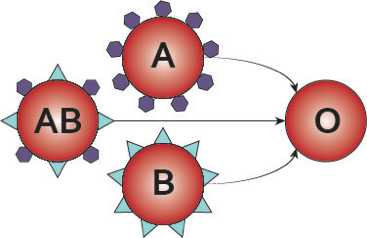Tackling transfusion with a universal blood type
Researchers have developed a technique to turn nearly any blood into a universal type resembling O-type blood, a development which could transform blood transfusion and human health.
By Victoria MartinezSeveral blood collection tubes.
Researchers have developed a technique to turn nearly any blood into a universal type resembling O-type blood, a development which could transform blood transfusion and human health.
Stephen Withers and David Kwan, University of British Columbia researchers, used a technique called directed evolution along with synchrotron-based structural imaging to develop an enzyme that removes A and B type antigens from blood.

The resulting red blood cells, without antigens, are very similar to the O-type blood cells which are the only blood types that can be transfused into anyone without adverse reactions.
“The idea of changing blood type by removing antigens is certainly not ours. It’s been around for a long time. But when they first came up with this idea, only a very limited repertoire of enzymes was available, and these had very limited activity” says Withers.
These first A and B type antigen-removing proteins, known as enzymes, came from green coffee beans, and while they worked, but only when used in massive doses. Withers’ lab harnessed a variety of modern techniques to build a better enzyme, one that would work in smaller quantities and with more efficiency.
Based on Canadian Light Source synchrotron imaging of the structures active in removing antigens, Withers and his collaborators created a library of enzyme “mutants” by introducing targeted variations into the protein structure and selecting the ones that gave the best results in removing antigens. After five rounds of this process where the best enzyme from each round was used as the basis for another series of mutations, their enzyme was 170 times more effective than it had been setting out.
The resulting enzyme works nearly perfectly converting B-type blood to O, but there is work left to be done on A-type, which has several subtypes.
“That’s going to be our challenge, pushing it to 100 per cent. This paper shows that conceptually, it’s possible. There’s going to be a lot of work to do, but it’s doable.”
Kwan, David H., Iren Constantinescu, Rafi Chapanian, Melanie A. Higgins, Miriam Koetzler, Eric Samain, Alisdair B. Boraston, Jayachandran N. Kizhakkedathu, and Stephen G. Withers. "Towards efficient enzymes for the generation of universal blood through structure-guided directed evolution."Journal of the American Chemical Society (2015).
Jayachandran N. Kizhakkedathu and his group in the Centre for Blood Research at UBC performed the enzyme testing.
Alisdair B. Boraston and his group at the University of Victoria, who contributed crystallography work.
Eric Samain and his group at the CNRS in Grenoble, France.
To arrange an interview, contact:
Victoria Martinez
Communications Coordinator
Canadian Light Source
306-657-3771
victoria.martinez@lightsource.ca
